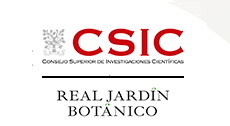Scientific Area
Abstract Detail
Nº613/1403 - Conservation genetics of threatened endemic plants in the Canary Islands: applications and perspectives.
Format: ORAL
Authors
Priscila Rodrguez Rodrguez, Sonia Sarmiento Cabello, Leticia Curbelo Muoz, Pedro A. Sosa Henrquez
Affiliations
Instituto Universitario de Estudios Ambientales y Recursos Naturales (iUNAT), Las Palmas de Gran Canaria University, Las Palmas de Gran Canaria, Spain.
Abstract
The study of population genetics has become a fundamental pillar in the management of endangered species. Knowing the distribution and levels of genetic variability within and between populations can help to resolve taxonomic uncertainties, detect bottlenecks and drift in natural populations, identify individuals genetically or detect hybrids, among other things. Nowadays, it is essential to know both the biology and ecology of species and their genetic conservation status in order to support species recovery plans and to optimise resources when carrying out conservation actions, either in situ or ex situ.
Due to the biogeographical particularities of island ecosystems, they are an important source of biodiversity, with a high rate of plant endemism. However, due to isolation and small population sizes, island endemics are more vulnerable to anthropogenic disturbances, resulting in an increasing number of threatened species.
In this presentation, we will highlight some practical cases studied by our research group in the Canary Islands in the last 15 years, showing different scenarios and results, and the diverse practical applications to which they have given rise. To sum up, our population genetic studies have resulted in the description of two new species, assistance in the performance of restoration actions or predictions of distribution changes under climate change. Likewise, the close contact with the managers of the different natural areas is essential for the transferability of the results.




